Abstract
Ticarcillin is a new semisynthetic penicillin similar to carbenicillin. Since carbenicillin has been shown to inhibit platelet function to such an extent that bleeding may accompany its use, an investigation of the effects of ticarcillin on hemostasis was made. The drug was administered to 17 human volunteers for periods of 3 to 10 days in intravenous doses of 100, 200, or 300 mg/kg per day (7 to 21 g/day). Serial studies of blood coagulation and platelet function indicated that coagulation was unaffected by ticarcillin but that platelet function became defective in all subjects. Abnormal platelet function was evidenced by lengthening of bleeding time (17 of 17 volunteers), depressed adenosine diphosphate-induced platelet aggregation (17 of 17), defective collagen-induced aggregation (15 of 17), and abnormal epinephrine-induced aggregation (10 of 17). Prothrombin consumption, due to reduced platelet procoagulant activity, was significantly decreased with a dose of 300 mg/kg per day. Comparison of results from this study with those from an earlier carbenicillin study revealed that ticarcillin at 300 mg/kg per day produces the same defects in hemostasis as does carbenicillin at 300 mg/kg per day, but that lower doses (100 or 200 mg/kg per day) of ticarcillin result in only a mild defect in platelet function. If the effective dose of ticarcillin is proven to be lower than the doses of carbenicillin currently employed for treatment of certain gram-negative infections, bleeding should not be a frequent complication of ticarcillin administration, when the drug is given to patients with normal renal function.
Full text
PDF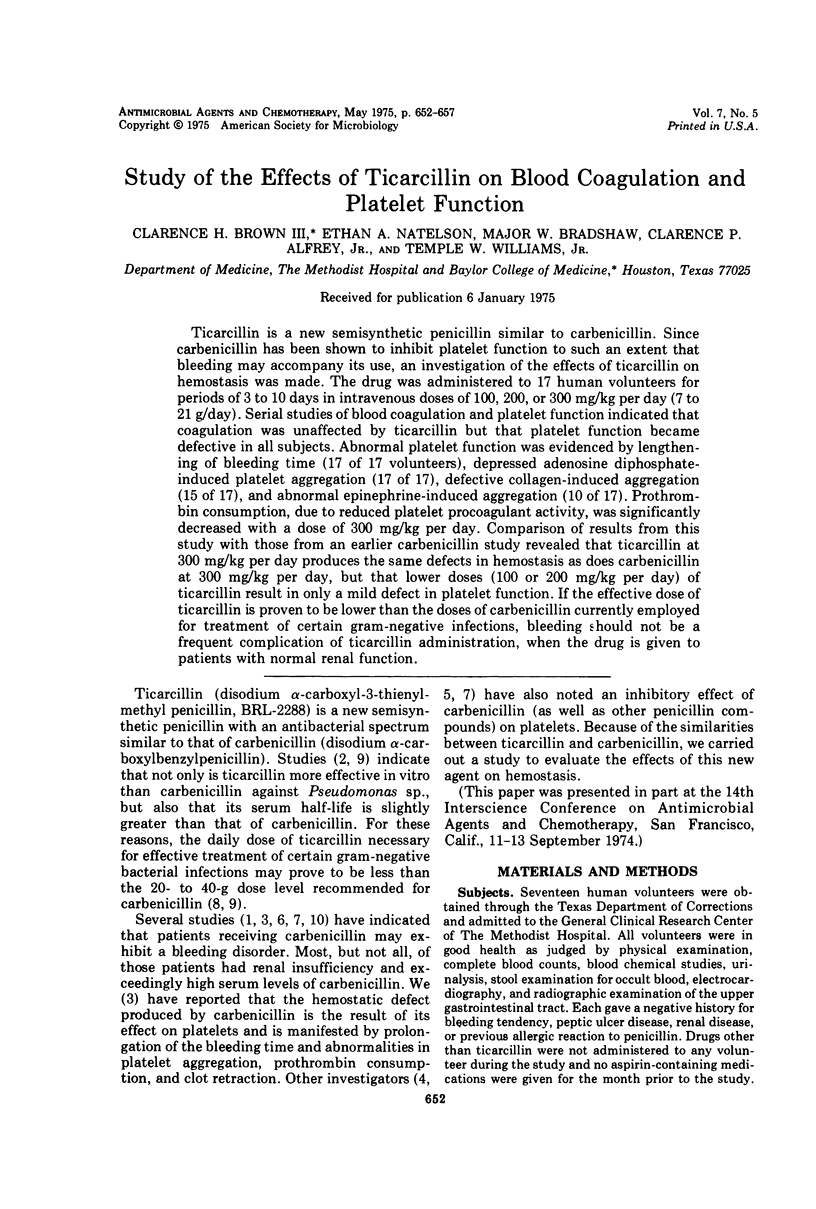
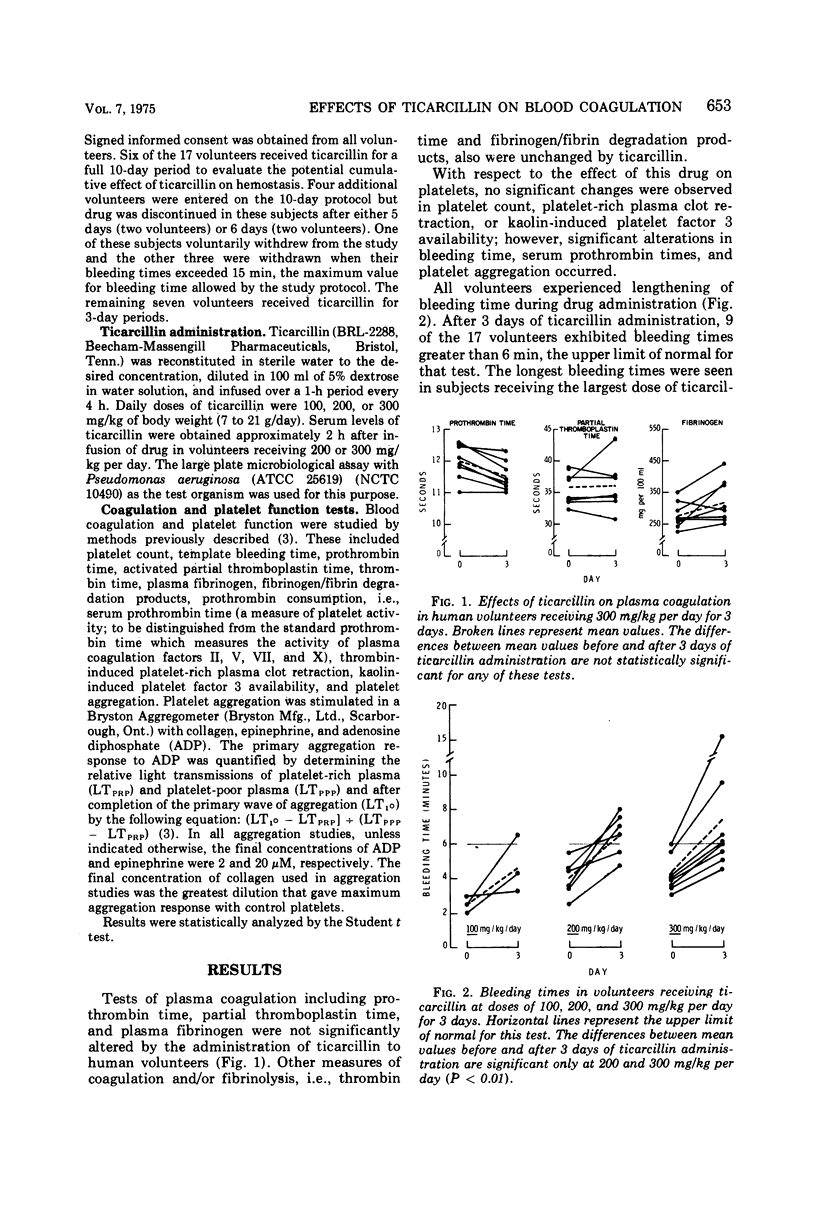
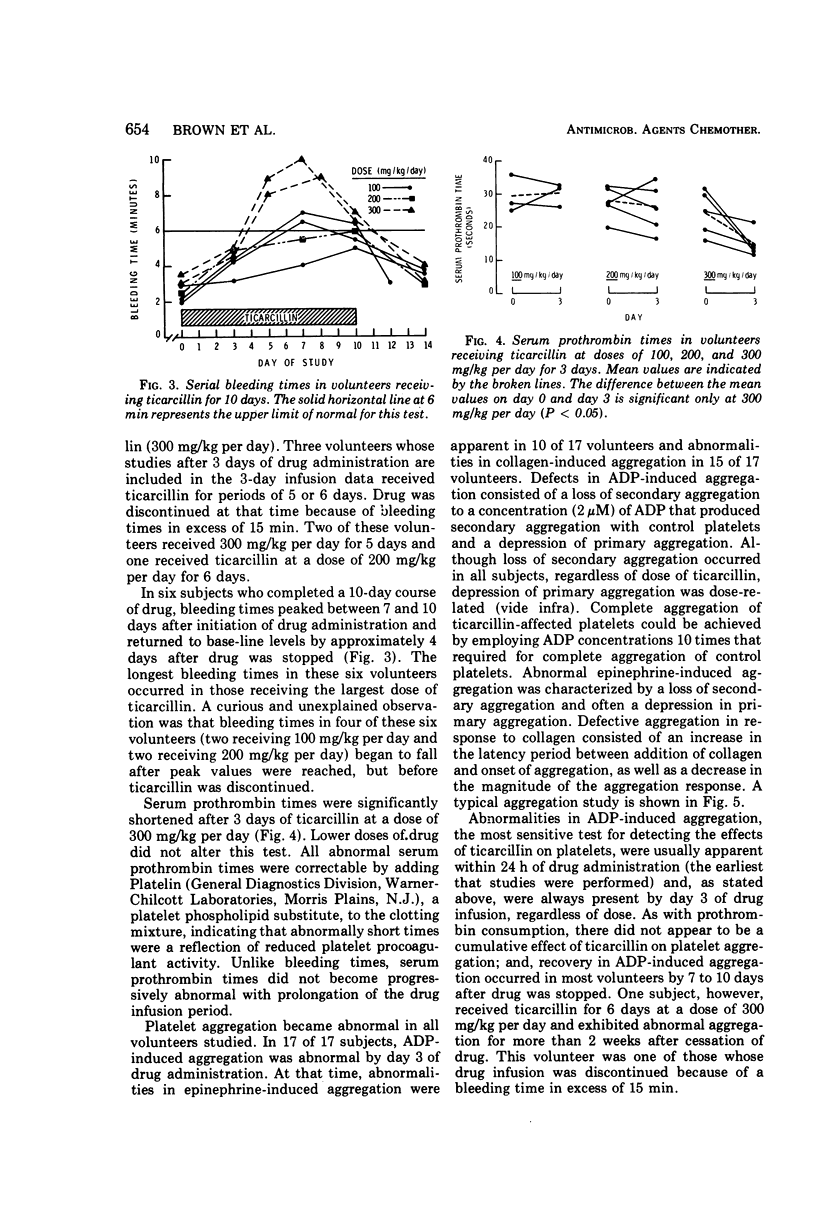
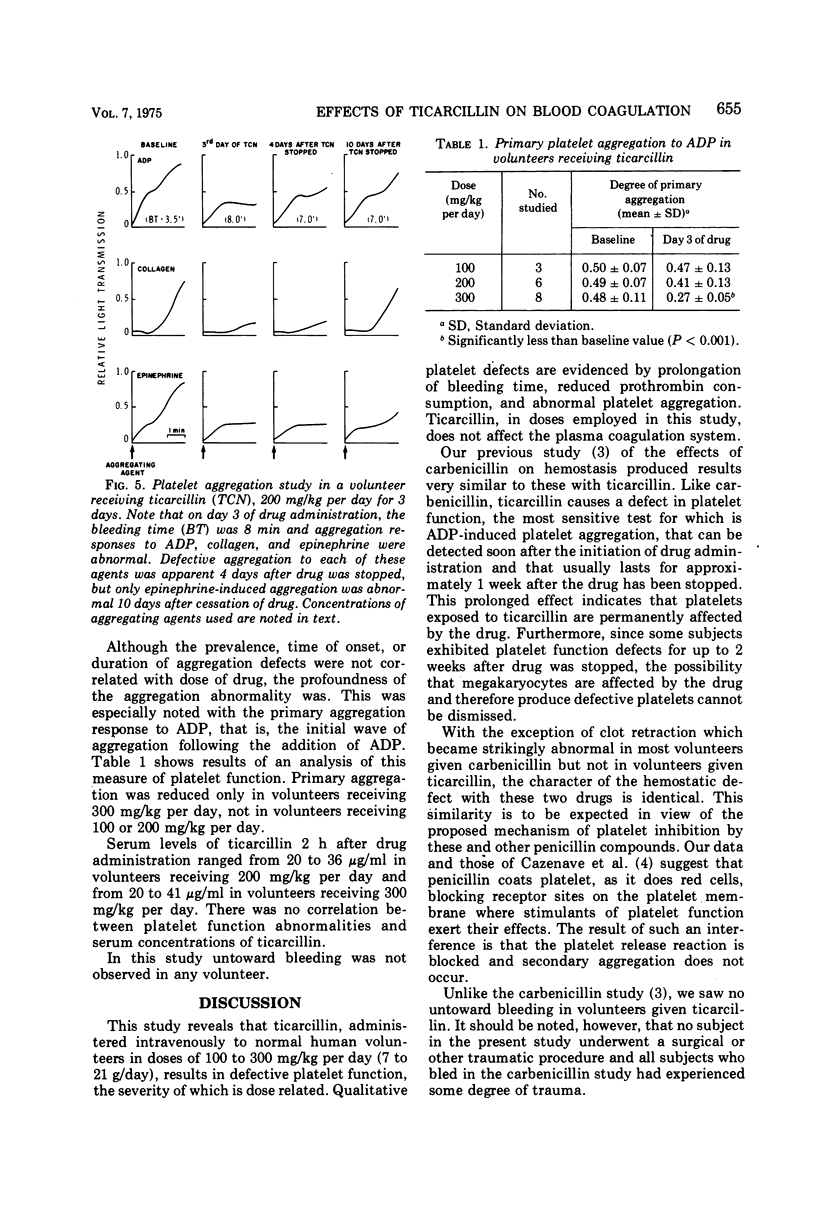
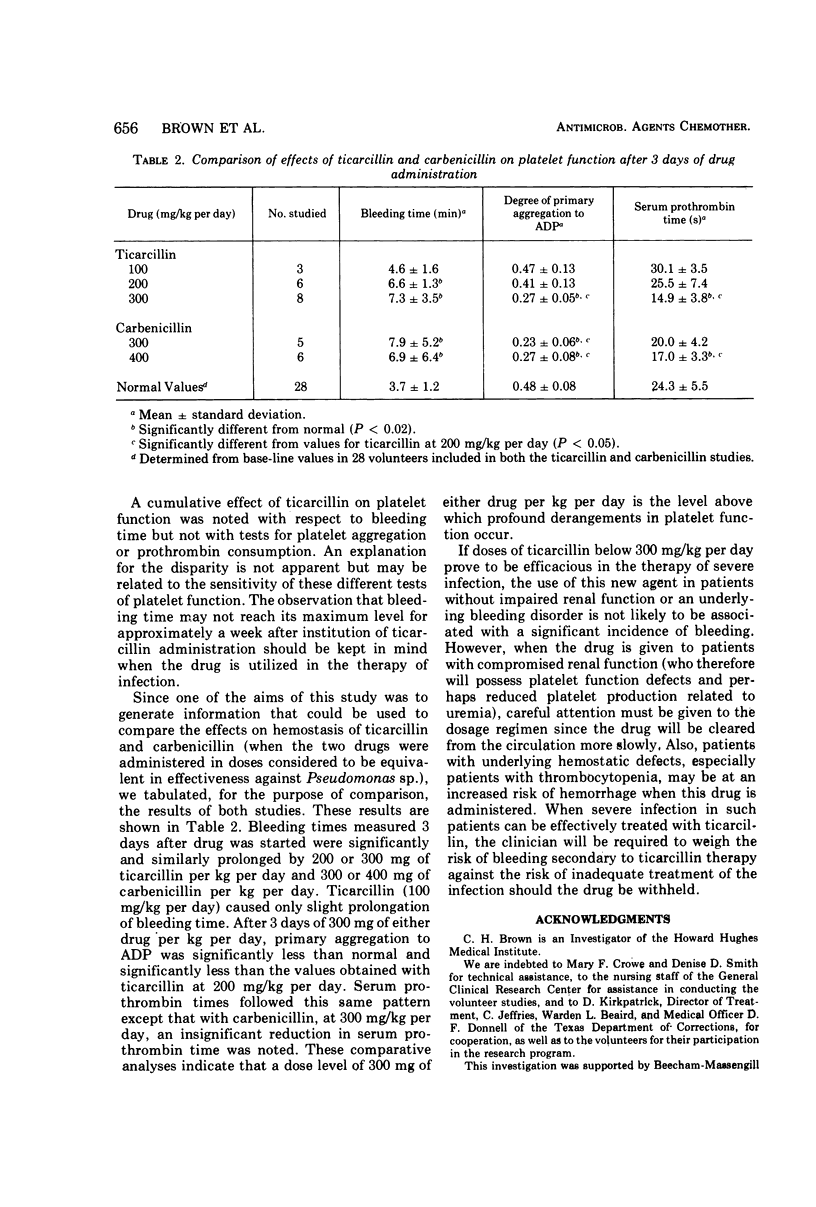

Selected References
These references are in PubMed. This may not be the complete list of references from this article.
- Andrassy K., Ritz E., Trobisch W., Andrassy T. Medikamentös induzierte hämorrhagische Diathese in der Urämie. Dtsch Med Wochenschr. 1973 Nov 23;98(47):2247–2249. doi: 10.1055/s-0028-1107233. [DOI] [PubMed] [Google Scholar]
- Bodey G. P., Deerhake B. In vitro studies of alpha-carboxyl-3-thienylmethyl penicillin, a new semisynthetic penicillin. Appl Microbiol. 1971 Jan;21(1):61–65. doi: 10.1128/am.21.1.61-65.1971. [DOI] [PMC free article] [PubMed] [Google Scholar]
- Brown C. H., 3rd, Natelson E. A., Bradshaw W., Williams T. W., Jr, Alfrey C. P., Jr The hemostatic defect produced by carbenicillin. N Engl J Med. 1974 Aug 8;291(6):265–270. doi: 10.1056/NEJM197408082910601. [DOI] [PubMed] [Google Scholar]
- Cazenave J. P., Packham M. A., Guccione M. A., Mustard J. F. Effects of penicillin G on platelet aggregation, release, and adherence to collagen. Proc Soc Exp Biol Med. 1973 Jan;142(1):159–166. doi: 10.3181/00379727-142-36980. [DOI] [PubMed] [Google Scholar]
- Lacombe M. J., Varet B., Godeau P., Herreman G., Cenac A. Action de fortes doses de pénicilline G sur les plaquettes. Etude au cours de la maladie d'Osler. Nouv Presse Med. 1974 Jun 1;3(22):1435–1437. [PubMed] [Google Scholar]
- Lurie A., Ogilvie M., Gold C. H., Meyer A. M., Goldberg B. Carbenicillin-induced coagulopathy. S Afr Med J. 1974 Mar 9;48(11):457–461. [PubMed] [Google Scholar]
- McClure P. D., Casserly J. G., Monsier C., Crozier D. Carbenicillin-induced bleeding disorder. Lancet. 1970 Dec 19;2(7686):1307–1308. doi: 10.1016/s0140-6736(70)92264-6. [DOI] [PubMed] [Google Scholar]
- Rodriguez V., Bodey G. P., Horikoshi N., Inagaki J., McCredie K. B. Ticarcillin therapy of infections. Antimicrob Agents Chemother. 1973 Oct;4(4):427–431. doi: 10.1128/aac.4.4.427. [DOI] [PMC free article] [PubMed] [Google Scholar]
- Rodriguez V., Inagaki J., Bodey G. P. Clinical pharmacology of ticarcillin (alpha-carboxyl-3-thienylmethyl penicillin, BRL-2288). Antimicrob Agents Chemother. 1973 Jul;4(1):31–36. doi: 10.1128/aac.4.1.31. [DOI] [PMC free article] [PubMed] [Google Scholar]
- Waisbren B. A., Evani S. V., Ziebert A. P. Carbenicillin and bleeding. JAMA. 1971 Aug 30;217(9):1243–1243. [PubMed] [Google Scholar]


